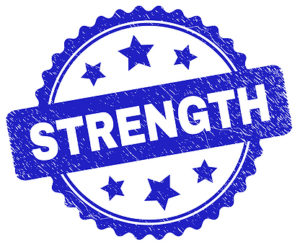No metrics? No proposal win!
 Features tell, and benefits sell. However, the solution features and benefits alone are insufficient. There is a third element in the winning equation: metrics.
Features tell, and benefits sell. However, the solution features and benefits alone are insufficient. There is a third element in the winning equation: metrics.
To win in the federal market, bidders need features, benefits, and proof points. When features with proven benefits exceed requirements and/or significantly reduce risk in a manner the customer values, the bidder earns a Strength or Significant Strength. Quite often, what prevents the bidder from achieving a Strength and ultimately winning is lack of metrics.
A proposal without metrics falls flat
Submitting a proposal without metrics is like trying to achieve results without any objectives. Similar to the old saying, what gets measured, gets done, in proposals, quantitative facts back up the merits of the solution. Too many bidders rely on vague statements, unsubstantiated bragging, and claims without merit. Question every feature with a proven benefit by asking:
- How so?
- So what?
- By how much?
- Within what timeframe/when?
- Where/what environment?
For example, a weak proposal may state:
“Customer increases quality with our <solution feature> implemented on six relevant projects.”
In this example, the proposal proves that the bidder implemented the solution, but not that the solution features resulted in benefits. The evaluator may wonder:
- How does the bidder define and measure quality?
- How much does the solution increase quality?
- Did the six project owners experience quality results, and if so, within what timeframe?
- Were these projects of similar size, scope, and complexity to this one?
The only proof the bidder offers in the example above is that they implemented the solution six times. Without metrics that corroborate outcomes, the government evaluator is unlikely to score a solution Strength.
A benefit with quantifiable proof is powerful
Gather and aggregate metrics from these six projects, and the benefit shines. The bidder can now articulate and prove benefits with more specificity by stating:
“Customer benefits from our <solution feature> that increases quality as measured by an average 20% error reduction within year 1 as proven on six relevant projects: <name the projects>.”
The selected metrics must be ones that resonate with the proposal evaluators. If the customer wants to decrease errors, then the solution proposed in this example offers proven benefits that are verifiable. In addition, if the customer sets a metric for error reduction in the solicitation, then the bidder has an opportunity to substantiate that the solution meets or exceeds that standard. If exceeding the standard is of value, then the proposed solution may earn a Strength or Significant Strength.
The power of metrics doesn’t end there. The better the metrics, the more likely that the proof points will stand out. Take your time with the data, because the quality of the metrics may further discriminate your offer from the competition and result in the win.
By Lisa Pafe, Vice President at Lohfeld Consulting Group, CPP APMP Fellow and PMI PMP
Lohfeld Consulting Group has proven results specializing in helping companies create winning captures and proposals.
As the premier capture and proposal services consulting firm focused exclusively on government markets, we provide expert assistance to government contractors in Go-to-Market Strategy, Capture Planning and Strategy, Proposal Management and Writing, Capture and Proposal Process and Infrastructure, and Training. In the last 3 years, we’ve supported over 550 proposals winning more than $135B for our clients—including the Top 10 government contractors. Lohfeld Consulting Group is your “go-to” capture and proposal source! Start winning by contacting us at www.lohfeldconsulting.com and join us on LinkedIn, Facebook, and Twitter.
Paperback or Kindle
10 steps to creating high-scoring proposals
by Bob Lohfeld
contributors Edited by Beth Wingate
Subscribe to our free ebrief
Teaming friends, frenemies, and enemies—12 tips to mitigate harmful effects
Did you know that contracting officers spend up to 20% of their time mitigating disputes between teaming partners? In an informal poll we conducted on LinkedIn last month, 40% of respondents classified their teaming partners as “frenemies” on their last bid.
Explore Further
- Advice (445)
- AI (5)
- APMP (17)
- Business Development (197)
- Capture Management (196)
- Favorite Books (5)
- Go-to-Market (27)
- Graphics (6)
- Lohfeld Books (3)
- Past Performance (58)
- Post-submission Phase (15)
- Pre-RFP Preparation (210)
- Proposal Management (269)
- Proposal Production (60)
- Proposal Reviews (27)
- Proposal Writing (77)
- Pursuit Phase (89)
- Research Report (2)
- Resources (60)
- Tools & Tips (258)
- Training (10)
- Uncategorized (220)

Sign Up for INSIGHTS and Download your FREE book
We'd love to help you with your proposals. Enjoy our complimentary Lohfeld Consulting Group Capture & Proposal Insights & Tips book with your FREE subscription to our Insights Newsletter.
GET YOUR FREE BOOK




